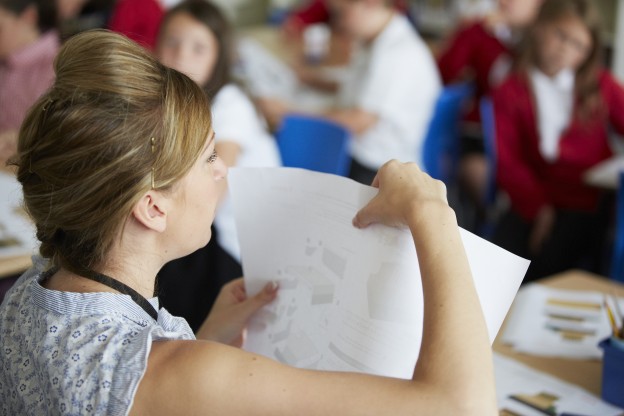In the past few weeks, two issues have come together for me, both focussed on the transition from primary to secondary school. Firstly, like thousands of other children in Year 6, my elder son and his school received the results from the new Key Stage 2 (KS2) assessments introduced by the government this year. Secondly, I have been working on a research paper based on some previous Year 6 assessments – Level 6 tests. Now, Level 6 tests – indeed national curriculum levels in primary schools – are dead and buried, but the analysis Ben Willis and I have worked on in the paper still has strong relevance for teachers in primary and secondary schools – and indeed their pupils.
What I want to highlight here is an unexpected finding that we uncovered in our study which I think is of real value to schools trying to improve the transition for pupils. We were looking to understand how the tests were being prepared for, and experienced in, 20 primary schools. We also spoke to 40 schools that chose not to take part, and we were interested to find that many of these schools didn’t take part because they were worried that their pupils’ results would be ignored when they went to secondary school. And this was also a concern for many primary teachers that did decide to put pupils in for this additional Year 6 test. This study was funded by the DfE and to its credit the department extended the project to allow us to speak to staff in 20 secondary schools to gain their views on the value of these tests.
Taking the findings from all of these interviews together, we found something that is under the surface but well known to almost any primary or secondary teacher in the country: that secondary schools tend to mistrust results from KS2 because they are concerned that they are teaching to the test and so the results do not provide a true reflection of the level (in the usual sense) that pupils are working at. The upshot was that in our study, 18 of the 20 secondary schools retested all their new Year 7 pupils. Again, this retesting is well known to any one working in schools but clearly not to others outside the school system: The Daily Telegraph picked this up as a news item, to our surprise, when the study was first published.
So, rather than acting to support pupils gain higher attainment to better reflect their potential – which was the driving idea behind the L6 tests – for many secondary schools, these results were contested and actually served to shore up tensions between primary and secondary schools. Of course, this is largely driven by the accountability pressures on primary schools to show as much progress as possible during children’s primary education; whereas for secondary schools the pressures are to demonstrate progress throughout secondary education. So primaries want pupils to do as well as possible in KS2; secondaries have the perverse incentive to want these results to be depressed so they can show progress from KS2 onwards.
Individual teachers and leaders were well aware of this, and neither primary nor secondary teachers and leaders in reality wanted pupils to be placed in this situation, yet they felt partly powerless due to the very strong accountability pressures – of Ofsted, of parental choice – they faced.
But there is a glimmer of hope here, and this takes us back to the present. What we found was that the test results actually placed a spotlight on these already existing accountability-based pressures. So if primary and secondary teachers could speak openly together about these issues, sharing the problem of all wishing to do the best for children but understanding that both types of schools face differing pressures, then this had the potential for them to work more effectively together to understand each other’s problems and – hopefully – help solve them together.
Coincidentally, last month, I’m proud to say, a team from the Sheffield Institute of Education won a university faculty award for a different project colleagues are working on together with Sheffield Local Authority and schools in Sheffield to try to ease the transition from primary to secondary schools for pupils in the city. This work is making a real difference and helping teachers in primary and secondary schools work together to support children as they transfer from Year 6 to Year 7. It will be projects like this that will help primary and secondary school teachers understand each other’s viewpoints better, and so have the chance to make this transition smoother for Year 6 children across the country, like my elder son, as they warily step across the primary secondary divide in the coming months.

Leave a Reply